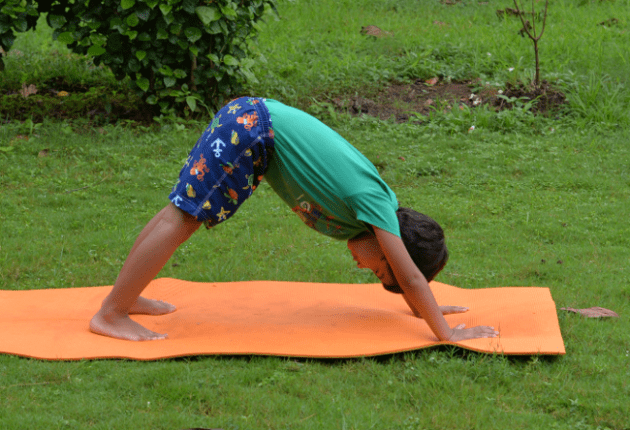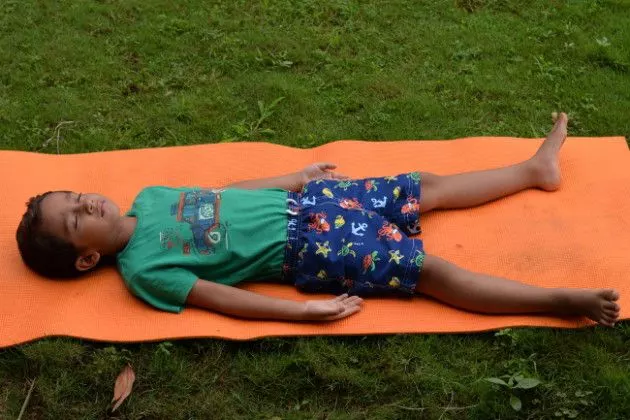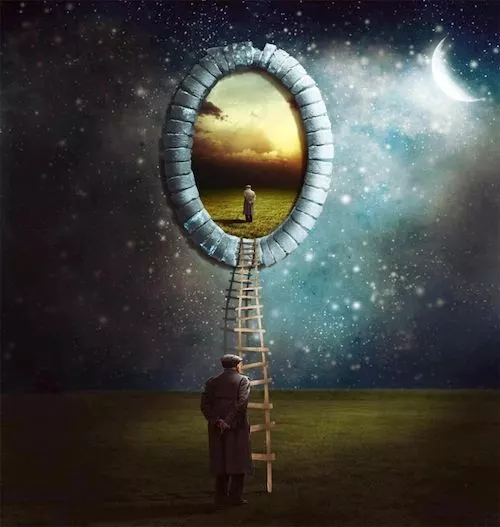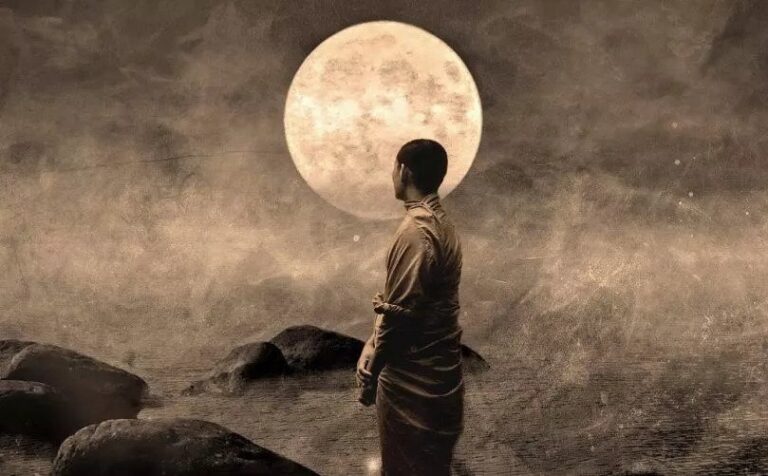The Realm of Beings in Hell: Naraka-gati/Jigokudō
 Yes, even Buddhists believe in Hell, and their notion of it is no less torturous and fiery than the Abrahamic religions depict it to be. This is the intense experience of suffering that we might go through as a human but all in the physical form; hunger, thirst, dismemberment and pain.
Yes, even Buddhists believe in Hell, and their notion of it is no less torturous and fiery than the Abrahamic religions depict it to be. This is the intense experience of suffering that we might go through as a human but all in the physical form; hunger, thirst, dismemberment and pain.
However, some teachers such as Sogyal Rinpoche, writer of the Tibetan Book of Living and Dying and Don Miguel Ruiz, author of The Four Agreements draw parallels between Hell beings and the average human; “If you look at any religious description of hell, it is the same as human society, the way we dream.” Could it be that the realm of the Hell Beings is simply a metaphor for our state of consciousness and suffering before we begin to awaken?
It’s certainly possible. Although according to Khenpo Ngawang Palzang, one of the most influential Dzogchen masters of the 20th century: “The bodies of hell beings are four times as big as those of the inhabitants of this world, and the color of boiled blood. Their skin is as delicate as that of a newborn prince, as fragile as gossamer-fine strands of wool.
Their bodies are fully fleshed and tender, and exquisitely sensitive to touch, like the eye. Their hair swirls upward, their eyes are triangular, the hairs on their bodies stand on end, and they have big hands and feet and large bellies. The mere sight of these hell beings, like wrathful deities, would be enough to make a person from our world faint.”
Whatever they look like, the obstacle that stands in the way of the Hell Beings is that of intense and unwavering anger. Transcend this, and they might just stand a chance of cleansing their karma and moving on to the next realm of Samsara.
The Realm of Hungry Ghosts or Spirits: Preta-gati/Gakidō
The realm of the Hungry Ghosts are characterized by having a great craving, one that they never seem to be able to satisfy. It is as if they are in a state of eternal starvation and are again referred to by Sogyal Rinpoche as desperate souls in human form, perhaps more of a metaphor for stock brokers in Wall Street, those who will never have their craving satisfied. Or perhaps they haunt the lives of every addict who has ever stepped out on that long and desperate path of drug or gambling addiction:
“[In a psychological sense, the hungry ghost realms] exist wherever people, though immensely rich, are never satisfied, craving to take over this company or that one, or endlessly playing out their greed in court cases.”
In Sanskrit the word ‘Preta’ literally means the ‘departed’ and, being ghosts, this realm supports no visceral pleasures or comforting sensations. Instead the landscape is void of any nourishment; no food or drink, (many illustrations of them depict them as having paper thin necks to represent this particular cause of their suffering), and no clothes or warmth.
Their emancipated figures represent their addictions to things other than worldly necessities and their state needed to transcend is the gaunt and thorny vacuum of miserliness.
Due to their swift and violent deaths they are said to be the ones who haunt the living, completely invisible and troubled by unfinished business they spend their time watching and wishing to rejoin the living, but may not until their penance is up and their sins paid for.
The Realm of Animals: Tiryagyoni-gati/Chikushōdō
The realm of Animals is easy to get trapped in as the cause of their suffering is ignorance. However, as with all the realms from this point on there is also a positive aspect to this state, as animals ‘below’ the human realm are able to enjoy the present moment and certain aspects of contentment and simplicity.
The Animal realm deals with that of survival and brutality, but also pack, certain perks that light beings or humans would neither be able to enjoy such as flying or swinging from trees or the multitude of other wonders that spring from the animal world.
In traditional Buddhism the view is a little more harsh. Those born in the animal realm are seen to be paying for past sins and within this dogma one can transgress and be thrown back into previous realms one thought they had ‘completed’. The payment usually comes with being born as livestock and living a grueling life pulling carts, being whipped and general mistreated.
As animals function primarily from instinct they are unable to generate good karma and can be stuck in this cycle for hundreds of thousands of earth years. This is also where the Buddhist notion of vegetarianism comes from – the understanding of the soul within – and was spread by Buddha in protest to the prevalence of killing and animal sacrifice popular in his lifetime and beyond. Their only hope that a human might show them love and compassion as a pet, helping them to feel the beginnings of the next stage; human.
The Realm of Being Human: Manusya-gati/Nindō
The Human realm, though not the ‘highest’ realm is the most coveted as, despite the strong pull that karmically binds us to this state it is the one we are most likely to reach enlightenment from.
Having equal amounts of suffering and glimpse of bliss, being human strikes the right balance and incentive needed for us to seek out Nirvana and try to pull ourselves out of the mire. With the aptitude denied of animals and the negative aspect of desire, we have within ourselves the ingredients to recognize the cycle of samsara and stop it in its tracks for good.
As with all the archetypes of the human psyche, to be human is to be a perfect yin yang; both good and evil; with light and shadow in equal measure.
“As conscious moral agents, human beings have agency that the beings in other realms do not; this clearly underscores the importance of moral action and spiritual development.” – James G. Lochtefeld.
Though inevitably consumed by earthly desires, to be human is to enjoy those pleasure yet desire for meaning in their bottomless-like existence. According to Buddhism, in the human realm we are affected by our past decisions yet able to easily change the future with our present decisions.
The Realm of Asura: Asura-gati/Ashuradō
The Asuras are Demi-Gods committed to jealousy and are, not unlike the bickering Gods of the Greek Parthenon are both good and evil.
“They are powerful and intelligent beings who dwell in cavities inside Mount Meru down to the universal golden basis and whose pleasures and abundance rival those of the gods. The dominant characteristic of the demi-gods is paranoia and jealousy, so they spend all their time fighting and quarreling among themselves over possessions and territories.”
These Demi-Goods seem to like to think they are Divine, but, having transcended the desire of the Human realm still somehow have the Human ego still firmly attached. They are Humans in God form, promoted yet still not heavenly. And entirely drunk on power.
You might liken them to any politician or C.E.O who, so ecstatic at winning their population vote will now do anything to protect their position, guarding it jealously and consistently comparing themselves to others.
The Realm of Deva: Deva-gati/Tendō
And so with the negative aspect of the Gods, is Pride. Enriched by worldly devotion and great and kind deeds they also persist on seeing the distinction, trying to be higher than creation.
Rewarded with intense pleasure or bliss, they reign over celestial kingdoms and live in splendor, perhaps deceptively so often they forget the whole point of them being in existence and vanish away into nothingness having not quite completed their goal.
As Sogyal Rinpoche puts it: “The main feature of the realm of the gods, is that it is devoid of suffering, a realm of changeless beauty and sensual ecstasy. Imagine the gods: tall, blond surfers, lounging on beaches and in gardens flooded by brilliant sunshine, listening to any kind of music they choose, intoxicated by every kind of stimulant, high on meditation, yoga, bodywork, and ways of improving themselves, but never taxing their brains, never confronting any complex or painful situation, never conscious of their true nature, and so anesthetized that they are never aware of what their condition really is.”
You might imagine the Gods to be perfect beings who have been entrusted with great power but yet are still battling their lack of humility and understanding that there are no boundaries between us. They still battle their misunderstanding of the illusion of power and the true lesson lying within like an oyster in the grit.
Reference
Image Source
Centre-Piece
Craving, Aversion, Delusion


























